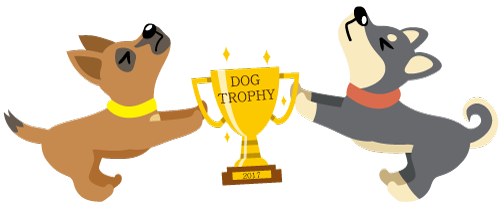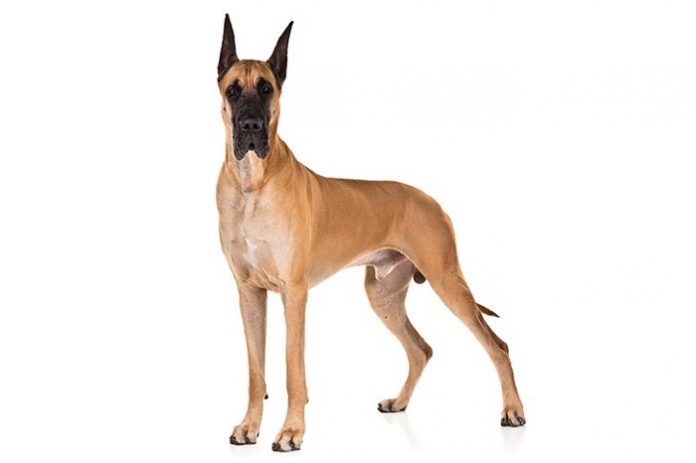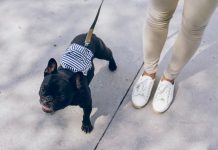A strong dog, according the anatomy belongs to one of the largest races in the world. Always spotted and highly valued at exhibitions around the world, this dog with gigantic proportions and equally high loyalty and commitment is today one of the favorite family dogs.
Guardian, hunter and precious decoration of medieval castles, the Great Dane is an old race that originates from ancient Assyrian molasses. The first written documents about dogs that resemble today’s Great Dane’s are found in the descriptions of the hunter of Count Philip the Bounty of Hesen. In these historical writings mention is made of dogs formed by crossing the mastiff with the Irish leaf, fast and strong animals that were received from England in the early 16th century by the princely kings of the continent.
In addition, John Tencer’s book from 1699 gives us extensive descriptions of large dogs of appearance and material very similar to the events we know today. It is alleged that these expensive and highly esteemed dogs placed special enclosures to protect them from hunting injuries. Tencer describes these dogs as extremely durable, which over a dozen kilometers over the course of the day, and then bravely and cheerfully love the game.
The Great Dane was created by the centuries-old crossing of the bulge baiser, the English mastiff and the greyhound. However, in 1875, at a rally in Berlin composed of judges and breeders, it was decided that the differences between the race were irrelevant and that they had come from the same ancestor. A meeting chaired by dr. Boundissa also decided that the race would unite under one name – the Great Dane and adopted the standard. Race was introduced already in 1880 under the name that was brought to the gathering.
The Great Dane is a big dog, a strong and almost square body, which is particularly pronounced in males.
The difference in the length of the body of the male, from the top of the pectoral bone to the sedate bumps, and the height of the ridge should not be higher than five percent, and in females not more than 10 percent. The height in the ridge at the male is at least 80 cm, and in the female at least 72 centimeters. The upper height limit is not prescribed by the standard. This dog combines strength and elegance with its grace and appearance, especially with its expressive head. The head is rectangular and narrow, well-developed, but not too pronounced corners.
The distance from the tip of the nose to the clearly pronounced rate should be approximately equal to the distance from the rate to the slightly pronounced bone. Upper lines of the muzzle and skull should be parallel. The nose is well developed, more wide than round, with large openings and particularly is black, except for black-and-white dogs, when incomplete pigmentation is tolerated.
The muzzle should be deep and preferably rectangular. The lips are dark pigmented. In black-and-white doggies, the incomplete pigmentation of the lip or lips of the meat is tolerated. The eyes are medium-sized, round, preferably dark. Sometimes lighter eyes are allowed in blue. In black and white, the eyes can be bright or even different colors. Shutters must not be relaxed. The ears are highly embedded, gently bent on a pre-set, medium-sized, and the fore edge of the ear adjoins the face. Eyebrows purchased in size and shape must match the head size and are worn upright, however, after January 1, 1993, uncapped ears are considered standard. The neck is long, muscular and vertically worn.
The tail reaches the hock and is highly settled, wide at the root and gradually narrows to the top. The tattered tail is undesirable. The chest is well developed and pronounced to reach the elbows. The forelegs are strong and muscular. The paws are round, highly rounded and well closed. Nails are short, strong and preferably dark. The skin is tight and well pigmented in monochrome dogs. In black and white, the pigment arrangement approximate with streaks.
The fur is very short and dense, attached to the body and shiny.
There are five different colors: yellow, tiger, black and white (harlequin), black and blue, and should not be mixed when breeding. All five colors are classified into three varieties that are evaluated separately. Together they assess harlequin and black doggies, yellow and tiger, and separately blue.
The Great Danes are known as gentle giants. They are very attached to the family. These unusually sociable dogs of tranquility are gentle and patient with children. The Great Dane is often described as a perfect family friend, a calm companion, who is self-confident, laughable, easy to train and extremely obedient. Socialization is also important, as dogmas tend to retreat into themselves and can grow into unbelievable beings, meet other dogs, people and rules that govern the environment.
The Great Danes are not too demanding. Hair care is not complicated and brushes are required several times a week. They need everyday but moderate physical activity, longer walks or play. Although she looks durable, she does not need to live outside. It belongs to dogs that occasionally scold. In some dogs this race can lead to health disorders such as: stomach torso, elbow and hip dysplasia, and cardiomyopathy. Their lifelong is 6 to 8 years.





